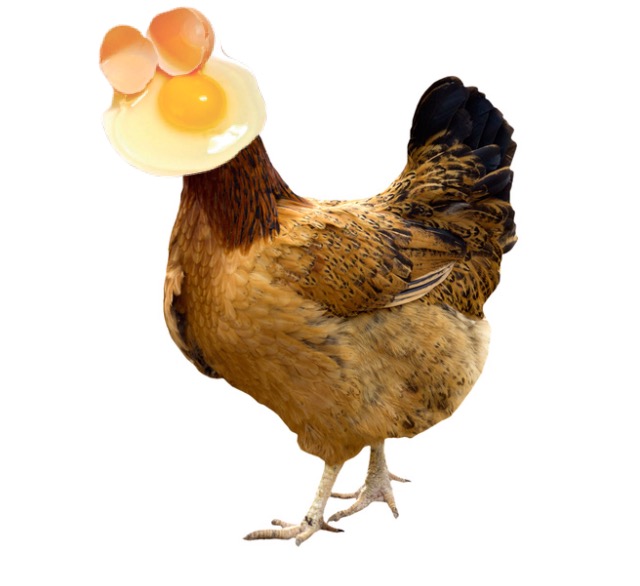It’s a question of causality that has led us all to scratch our heads at one point or another and wonder: How could you get a chicken without an egg, and vice versa? As it turns out, this riddle does have an answer, and in this race, it’s the egg that is the clear winner.
Chickens were far from the first ever animals to lay eggs. In fact, egg-laying is a practise dating back hundreds of millions of years. Some of our earliest, ocean-dwelling ancestors reproduced through external fertilisation, much the same as modern-day fish. The female produces a number of small eggs which are released into the water before being fertilised by the male and allowed to grow. When animals began to leave the water and evolve towards a land-based lifestyle, this process became unsustainable, because the eggs released by the female relied on thin outer membranes. These membranes allowed exchange of materials with the surrounding water, for hydration, oxygen, and waste disposal, and would dry out and die if laid on land. The need to retain water within the egg when laid away from a direct water supply led to the gradual evolution of a tougher outer membrane for the egg, capable of blocking water flow, resulting in either leathery outer layers or the brittle, calcified shell that we’re familiar with today in bird eggs.
“The need to retain water within the egg when laid away from a direct water supply led to the gradual evolution of a tougher outer membrane for the egg.”
The original animals laying these eggs founded the group of animals referred to as ‘amniotes’, so named for the presence of a membrane enclosing the embryo during development, known as an amnion, which is responsible for gas exchange between the embryo and its surroundings. These primitive amniotes most closely resembled modern-day reptiles in appearance, but the group would later evolve and branch out to give rise to all the higher vertebrates: mammals, birds, and reptiles. In fact, the human genome still contains traces of our ancestors’ egg laying history; defunct genes or ‘pseudogenes’ which code for egg yolk protein or vitellogenin.
It would take hundreds of millions of years, and countless intermediate species, before the predecessor of the modern domesticated chicken, the red jungle fowl, emerged in southeast Asia. These birds were captured and domesticated by humans between 4,000 and 10,000 years ago. Following generations of selective breeding by humans, and interbreeding with other closely related species, the red jungle fowl subtly altered. Initially, it seems they were mainly bred for cock-fighting, and so strength and aggression were the hallmark of the newly emerging subspecies. However, over time, they were found to be tastier than they were entertaining, so by the time of ancient Egypt, the domesticated chicken we’re all familiar with today had evolved as a distinct subspecies from their red jungle fowl progenitors.
So long story short, the chicken and the egg are just the latest chain in a cycle dating back to time beyond reckoning, but the answer is clear, the egg was here first!






